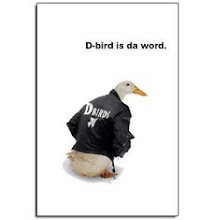To quote:
Parents and other adults in these novels usually fail to prevent young people from acting out — with variously comic or tragic consequences. Yet their authors recognize the developing moral intelligence of both their characters and their audience, producing stimulating books for young readers (that parents might even enjoy).
- Angus, Thongs and Full-Frontal Snogging: Confessions of Georgia Nicolson, by Louise Rennison. Be More Chill, by Ned Vizzini.
- Breakout, by Paul Fleischman.
- The Earth, My Butt, and Other Big Round Things, by Carolyn Mackler.
- Feeling Sorry for Celia, by Jaclyn Moriarty.
- Flipped, by Wendelin Van Draanen.
- The Friends, by Rosa Guy.
- If You Come Softly, by Jacqueline Woodson.
- Life Is Funny, by E. R. Frank.
Looking for Alaska, by John Green. - Luna, by Julie Anne Peters.
- Make Lemonade, by Virginia Euwer Wolff.
- Rules of the Road, by Joan Bauer.
- Sandpiper, by Ellen Wittlinger.
- The Skin I'm In, by Sharon G. Flake.
- Someone Like You, by Sarah Dessen.
- Speak, by Laurie Halse Anderson.
- Tears of a Tiger, by Sharon Draper.
- Tiger Eyes, by Judy Blume.
- Uglies, by Scott Westerfeld.
Conversely, Naomi Wolf expresses concern, in another NYT article, about Gossip Girl books and similar series. To quote:
The "Gossip Girl," "A-List" and "Clique" series — the most successful in a crowded field of Au Pairs, It Girls and other copycat series — represent a new kind of young adult fiction, and feature a different kind of heroine. In these novels, which have dominated the field of popular girls' fiction in recent years, Carol Gilligan's question about whether girls can have "a different voice" has been answered — in a scary way.
and she concludes:
The great reads of adolescence have classically been critiques of the corrupt or banal adult world. It's sad if the point of reading for many girls now is no longer to take the adult world apart but to squeeze into it all the more compliantly. Sex and shopping take their places on a barren stage, as though, even for teenagers, these are the only dramas left.
And if you click here, you'll find ten questions readers of Wolf's essay posed, and how they were answered.
What is a girl to read?






















No comments:
Post a Comment